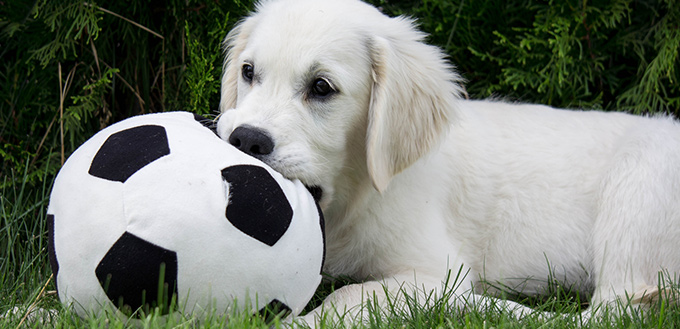Just like humans, dogs can also develop halitosis, the medical term for bad breath. While it is easy to say that infrequent brushing of the teeth can be the cause of canine halitosis, it is not only the cause. For veterinarians, canine bad breath is just a sign of a health problem. Recognizing the different reasons for having bad breath in dogs should help pave the way for understanding what can be done to address the problem.
Why Do Dogs Have Bad Breath?
Halitosis or bad breath is most often caused by germs present in the oral cavity of dogs. Gum diseases, tooth decay, and even oral infections can also lead to halitosis in dogs. Certain breeds of dogs like toy breeds and small breeds are also more prone to the development or formation of plaque and tartar. Plaque is actually a very thin film of an exceptionally resistant material that is secreted by bacteria and other microorganisms present on the surface of the teeth. This thin layer of film is what protects these germs from the slightly acidic environment of the oral cavity.
Over time, minerals begin depositing into the thin layer of film to create an even tougher barrier, tartar. This gives germs the protection they need to eat away into the enamel until they reach the dentin. By then they would have already proliferated that the mixture of germs, their waste products, and the different particles that are present in the dog’s mouth all react to create one nasty smell.

This should be easily addressed by frequent oral care. However, if the bad breath is already chronic or has been going on for many months it may no longer be just a simple problem in the teeth, gums, and oral cavity of the dog. Chronic halitosis is often viewed as a sign of another health problem.
One of these is kidney disease, especially if you smell an ammonia-like odor from your dog’s breath. The role of the kidneys is in the filtration and excretion of metabolic waste products. If this function is hampered because of a disease condition in the kidneys or because of kidney failure, then these metabolic waste products won’t be removed from the dog’s system. Many of these are nitrogenous wastes which are converted into ammonia by the liver. This can contribute to an ammonia-like bad breath.
Diabetic dogs especially those with Type 1 Diabetes are prone to the development of diabetic ketoacidosis. One of the characteristic manifestations of this diabetic complication is an acetone breath caused by the abnormal accumulation of ketones in the blood. At the same time, uncontrolled diabetes has the uncanny ability to suppress the full functioning of the dog’s immune system allowing germs in the mouth to proliferate.
The presence of tumors in the dog’s oral cavity can also predispose canines to bad breath. Tumors typically grow very fast that the circulatory system cannot essentially keep up with the increased metabolic requirements of the surrounding tissues. Some of these tissues eventually die and are replaced by bacteria.
Eating toxic substances and foreign objects can also produce bad breath in dogs. These substances can react with the acids in the stomach, emitting noxious gas that can linger in the dog’s mouth. Of course, other manifestations can also be observed. Certain foods can also cause bad breath in dogs.
Other potential causes of canine halitosis include inflammation of the respiratory passages, gastrointestinal problems, and even peculiar canine behavior such as cocrophagia.
What Can Be Done to Treat Canine Halitosis?
Treating bad breath in dogs starts with a comprehensive assessment of the cause. Your dog’s diet, general behavior, exercise habits, and oral hygiene will have to be reviewed. Lab work and physical examination will also help identify any underlying cause of the halitosis.
If the cause of the bad breath is related to oral and dental problems such as the presence of dental caries, then the vet will have to remove these and the appropriate treatment be applied. The management of gum diseases in dogs typically entails a thorough cleaning and polishing of the dental surfaces. If there’s substantial loss of dental or gum tissue, then tooth extraction may be considered. The vet may also prescribe certain solutions to address the growth of bacteria and reduce odor.
If the cause of the problem is anything but dental related, the vet will have to address the root cause. If it’s related to kidney disease or diabetes, then these issues must be resolved. If the problem is caused by ingestion of foreign objects, toxic substances, or even halitosis-causing food, then these must be evacuated from the dog’s system.

What Can I Do to Prevent Bad Breath in Dogs?
Preventing halitosis in dogs should be fairly easy. One only needs to make sure that his or her dog gets regular and frequent brushing of its teeth. As much as possible, the brushing should be done on a daily basis preferably at exactly the same time each day. Brushing your dog’s teeth is best accomplished when it is completely relaxed. As such, timing is critical.
When brushing the dog’s teeth it is important to integrate an assessment of its oral cavity including gums and teeth. This is the perfect opportunity to take note of any redness or swelling or any discoloration on its teeth and gums. Chipped or broken tooth should also be noted.
It is equally important to use the correct implements for canine teeth brushing. Use only toothpastes that are especially formulated for dogs; never human toothpastes. Moreover, getting an appropriately-sized dog toothbrush is also critical. You can choose a finger toothbrush if you want. Another option is to also use a dog dental spray, as these are also effective in combatting bad breath.
Related Post: Dog Toothpaste
Bad breath in dogs can be a sign of an oral health problem mostly caused by germs that are proliferating in the dog’s mouth. Or it could also be a sign of a more serious problem like cancer, respiratory infections, diabetes, kidney disease, and many more. Knowing these causes can help you determine the best and most appropriate course of action to take.
Sources:
- Elizabeth Xu, 7 Reasons Your Dog has Bad Breath, PetMD
- Colleen Oakley, Bad Breath in Dogs, Pets WebMD
Note: The advice provided in this post is intended for informational purposes and does not constitute medical advice regarding pets. For an accurate diagnosis of your pet's condition, please make an appointment with your vet.






